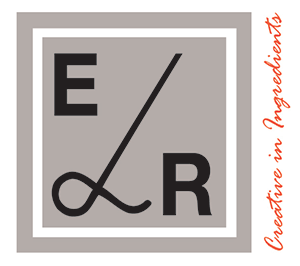Our delivery program, Lecithins
E & R Food Ingredients B.V. represents Sternchemie, part of the Stern-Wywiol Group.
Nature is full of wonders. Lecithin is one of them.
Egg yolk, soybeans, sunflower seeds, mother’s milk, and heart, liver and nerve cells all have one thing in common: Very high concentrations of lecithin. Lecithins are phospholipids, made up primarily of fatty acids, glycerine, phosphoric acid and choline. Lecithin performs important functions both in natural organisms and in the food industry. Physiologically, it stabilizes cell membranes and stimulates metabolic activity. Techno-biologically, it is an emulsifier and dispersant.
A bridge-builder
Lecithin combines with fats and oils just as well as with water. The amphiphilic effect of lecithin is based on its structure, which incorporates both a polar phosphorus group as well as a non-polar lipid component. This combination of hydrophilic and lipophilic properties makes lecithin an extremely effective emulsifier. With it, substances that normally would not mix, such as water and oil, can be combined into stable emulsions. Very small particles can be emulsified and dispersed in water solutions. This makes lecithin ideal for making soft-spread margarines, crispy pastas, flavourful chocolates and readily soluble cocoa powders.
A flavour keeper
better when lecithin is added. This is due to lecithin’s ability to form liposomes by enclosing oil droplets in a double layer of phosphatidylcholine. This lets flavours be encapsulated and transported, giving low-fat foods in particular more intensive flavour.
Lecithin manufacture
The raw materials for lecithin are oil seeds like soybeans, rapeseed and sunflower seeds. These are first cleaned, dried and pressed to give a raw oil with a lecithin content of up to 2.5 percent, depending on the seed. To separate the lecithin out, the raw oil is heated to 70 – 90°C and intensely mixed with 1 – 3 percent water. Special high-speed separators then centrifuge out the lecithin from the raw oil. The lecithin-water sludge is dried and then cooled to under 50 °C to prevent darkening. The result is liquid virgin lecithin.
To obtain a powder or granulate, the liquid oil must be drawn out of the lecithin. This increases the concentration of the lecithin’s functional component, the acetone insolubles.
Sources
Soya
Soya is the most frequent source of non-genetically modified (GM-free) lecithin worldwide. We focus on reliability of supply and on quality. Sternchemie was one of the first companies to start sourcing Indian soya lecithin. They also work with selected partners in Europe, Asia and the Americas in order to meet the most demanding of requirements.
Sunflower
Sunflower is an alternative when it comes to soya- and GM-free lecithins. Thanks to close cooperation with international raw ingredient producers in Europe and South America, we try to ensure supply capability at all times and meet discerning raw ingredient requirements.
Rapeseed
Thanks to its composition and functional properties, rapeseed lecithin is the perfect addition to our portfolio of soy and sunflower specialties and the “rising star” in the GM-free sky. Regional cultivation and a broad portfolio of European partners guarantee maximum flexibility and quality.

